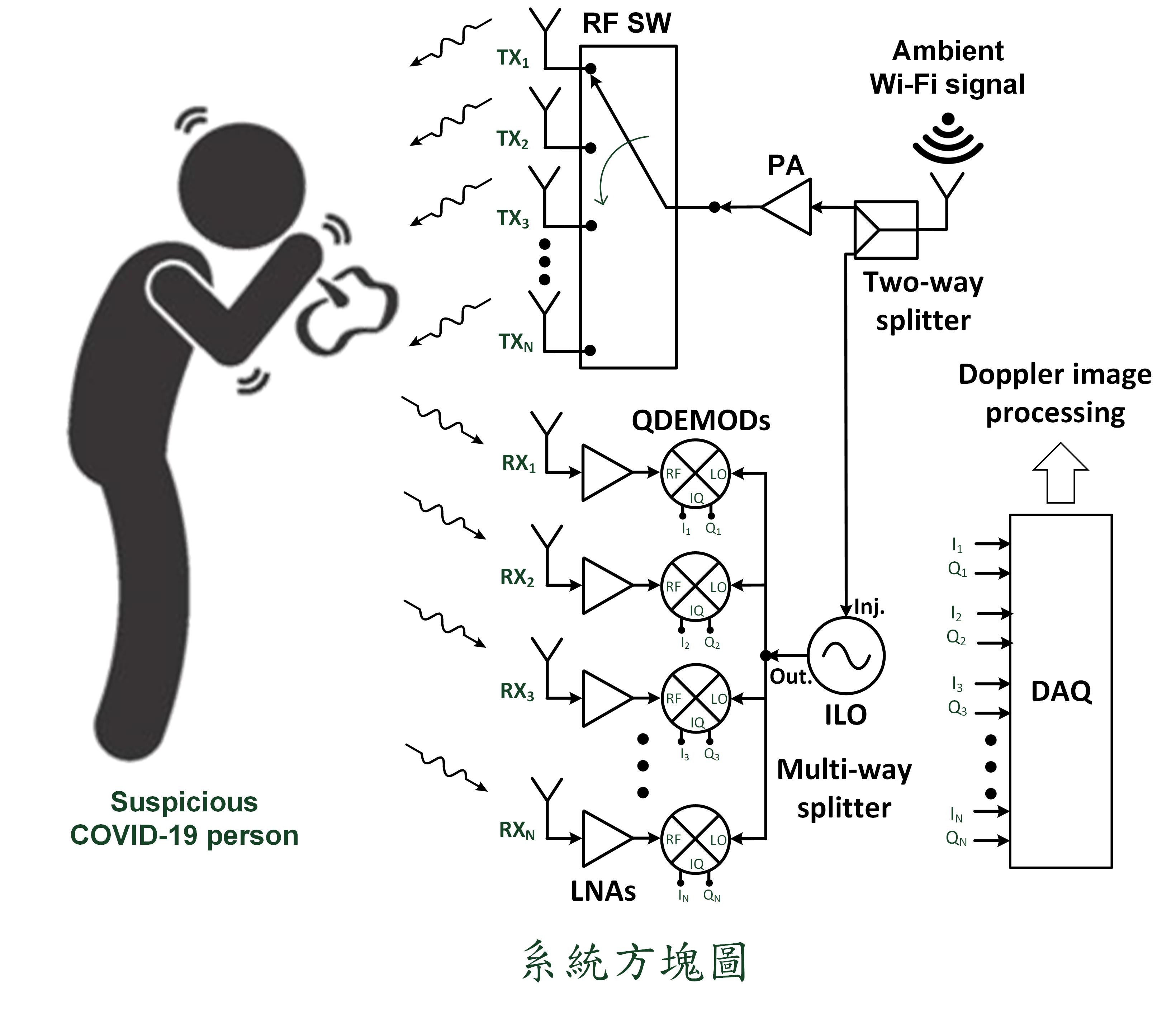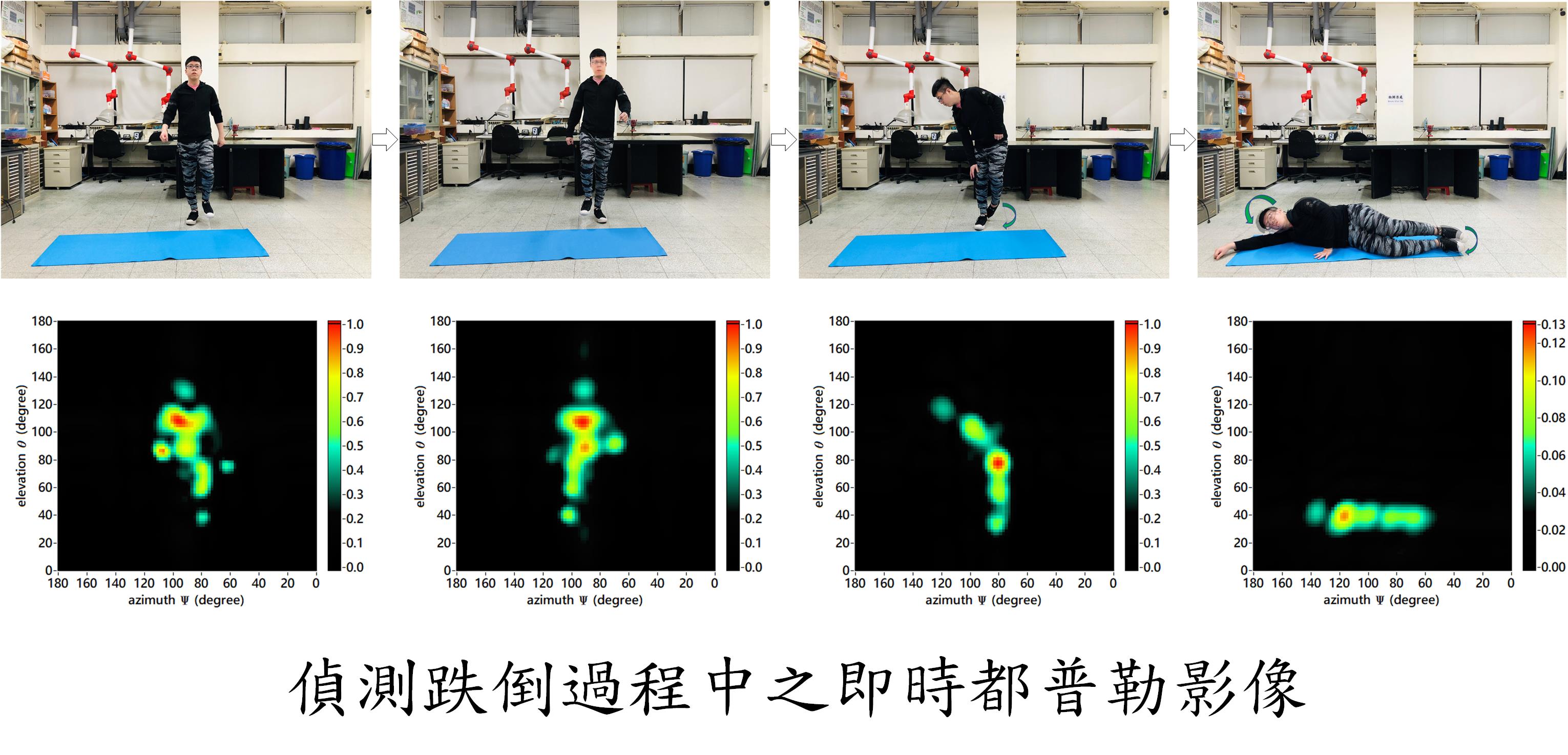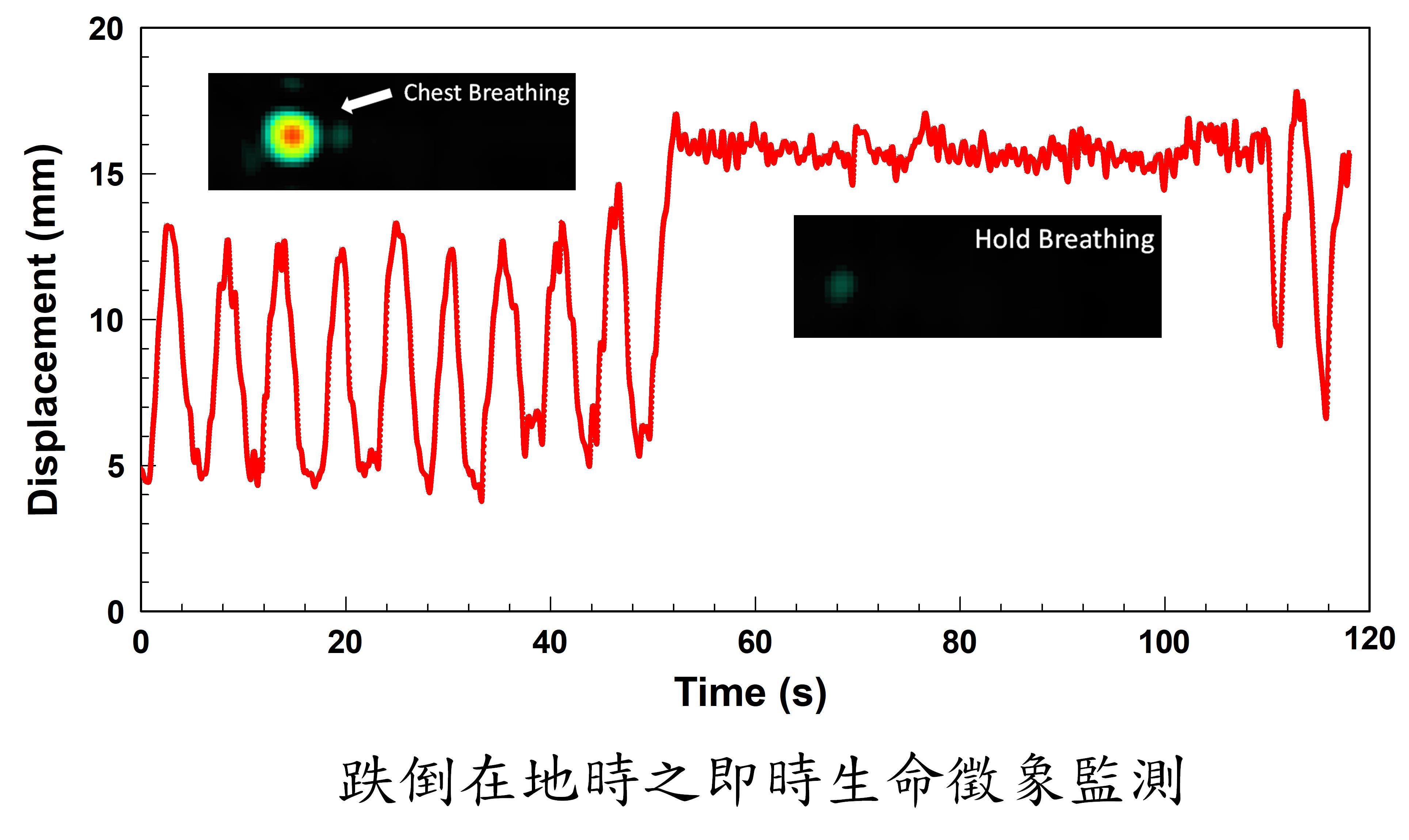| Technical Name | 利用環境Wi-Fi訊號進行感測之防疫用途非接觸健康監測系統 | ||
|---|---|---|---|
| Project Operator | National Sun Yat-Sen University | ||
| Project Host | 洪子聖 | ||
| Summary | An IOT sensor was presented to detect human motionvital signs with Wi-Fi signals. It mainly combines MIMO beamforming, injection-locking radarmachine learning techniques to recognizetrack physicalphysiological activities for health status monitoring. As a proof of concept for pandemic prevention, the presented sensor aims to inspect whether someone is exhibiting signssymptoms of COVID-19 infection within the Wi-Fi coverage area, such as fatigue, cough, shortness of breathirregular heart rhythm,even to detect sudden death. |
||
| Scientific Breakthrough | The breakthrough of this technology is to transform the correlation process in a conventional passive radar from baseband software processing to RF hardware processing. The use of invented injection-locking radar is the key to enable this breakthrough. Since this technology does not have the drawbacks of the conventional passive radar that require a lot of computing resources, it is therefore suitable for low-power IOT sensor applications. Furthermore, it can be combined with MIMO beamformingmachine learning to detect human activities with Wi-Fi signals for identifying the health status. |
||
| Industrial Applicability | Taiwan leads the world in the manufacture of Wi-Fi-related productshas a strong medical infrastructure. Taiwan is now facing a serious threat of COVID-19 transmission at community level. Therefore, if this Wi-Fi-based sensing technology can be used to develop a non-contact health monitoring system that can inspect whether someone is exhibiting signssymptoms of COVID-19 infection within the Wi-Fi coverage area, it can not only make an important contribution to Taiwan's pandemic prevention actions, but also enhance the innovative imageadded value of Taiwan's communication products. |
||
| Matching Needs | 天使投資人、策略合作夥伴 |
||
| Keyword | Injection-locking radar Wi-Fi-based sensing Non-contact sensing Vital sign sensing Health monitoring Pandemic prevention Telemedicine Home healthcare Internet of things Artificial intelligence | ||
- whitewager@gmail.com
other people also saw







